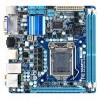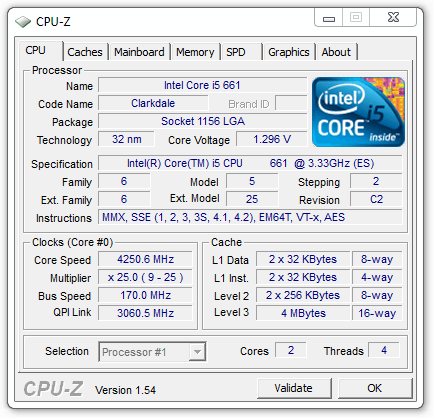- Qualcomm Launches Snapdragon 4 Gen 2 Mobile Platform
- AMD Launches Ryzen PRO 7000 Series Mobile & Desktop Platform
- Intel Launches Sleek Single-Slot Arc Pro A60 Workstation Graphics Card
- NVIDIA Announces Latest Ada Lovelace Additions: GeForce RTX 4060 Ti & RTX 4060
- Maxon Redshift With AMD Radeon GPU Rendering Support Now Available
Gigabyte H55N-USB3 – Big Features, Small Package

Some might say that “bigger is better”, but when it comes to today’s PCs, that doesn’t have to be the case. Rather, you can easily build a feature-rich and high-performance PC that can be entirely hidden from view. Mini-ITX motherboards exist to help with that, and where those are concerned, Gigabyte’s H55N-USB3 is well-worth looking out for.
Page 9 – Overclocking Gigabyte’s H55N-USB3
Before discussing results, let’s take a minute to briefly discuss what I consider to be a worthwhile overclock. As I’ve mentioned in past content, I’m not as interested in finding the highest overclock possible as much as I am interested in finding the highest stable overclock. To me, if an overclock crashes the computer after a few minutes of running a stress-test, it has little value except for competition.
How we declare an overclock stable is simple… we stress it as hard as possible for a certain period of time, both with CPU-related tests and also GPU-related, to conclude on what we’ll be confident is 100% stability throughout all possible computing scenarios.
For the sake of CPU stress-testing, we use LinX. Compared to other popular CPU stress-testers, LinX’s tests are far more gruelling, and proof of that is seen by the fact that it manages to heat the CPU up to 20°C hotter than competing applications, like SP2004. Also, LinX is just as effective on AMD processors. Generally, if the CPU survives the first half-hour of this stress, there’s a good chance that it’s mostly stable, but I strive for a 12 hour stress as long as time permits.
If the CPU stress passes without error, then GPU stress-testing begins, in order to assure a system-wide stable overclock. To test for this, 3DMark Vantage’s Extreme test is used, with the increased resolution of 2560×1600, looped nine times. If this passes, some time is dedicated to real-world game testing, to make sure that gaming is just as stable as it would be if the CPU were at stock. If both these CPU and GPU tests pass without issue, we can confidently declare a stable overclock.
Overclocking Gigabyte’s H55N-USB3
When I first received this board, I didn’t have to think too long before deciding not to overclock it. The reason was simply because most people don’t purchase mini-ITX boards with overclocking in mind, and I’d be quite surprised if even 0.5% of people who purchased such boards did that. But at the GO OC event two weekend’s ago, there was apparently a PC set up with this exact board and the CPU running at 4GHz.
Well, it was decided… I’d be overclocking this thing. Due to time though, I only managed to overclock a single CPU – the one used for testing – and even after being done, I’m still not quite satisfied. I felt like I could go much further, but with other pressing requirements, I had to stop and tackle other things. I did manage to get 4 hours LinX stable out of a nice clock, though:

As the Core i5-661 is 3.33GHz at stock, a 4.25GHz overclock isn’t that impressive. But, the fact that this board handled it like it was nothing impressed me, because once again, this is just a mini-ITX motherboard. You could fit almost three of these boards into a single ATX motherboard, and with results like these, you’re sure not giving up much.
The board includes 6 phases dedicated to the CPU, so I have no doubt that the board could handle a 4GHz overclock for any LGA1156 processor, as long as for some reason you won’t have to increase the voltage a great deal. Fortunately today, that’s rarely a requirement, and as the screenshot shows, I was using a safe 1.3v. With more tweaking, that might have even been able to be lowered a bit.
I still can’t imagine too many people wanting to overclock on this motherboard, unless as outlined in the intro, it’s to be used or a gaming PC. But, the fact that the ability is there is nice, and if you do want to OC for the sake of say, video encoding, the board will let you. If you’re using this board in a small chassis though, like those that it’s designed for, I highly recommend you be careful with your overclocks. Smaller chassis mean increased heat, so bear that in mind.
Support our efforts! With ad revenue at an all-time low for written websites, we're relying more than ever on reader support to help us continue putting so much effort into this type of content. You can support us by becoming a Patron, or by using our Amazon shopping affiliate links listed through our articles. Thanks for your support!





